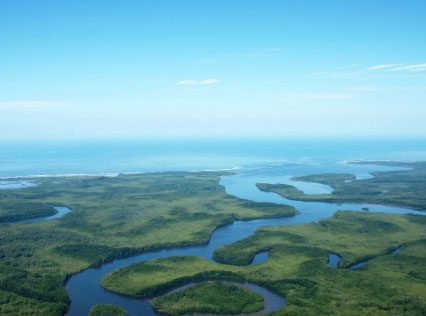The end of 2019, was a year in which judicial situations took place in Costa Rica to discuss where the objectives of various groups are directed in favor of the environmental approach that each one has.
If we talk about the pineapple issue, a great number of organizations made debates, mobilizations, and demands to competent authorities due to the activities, which they consider damage to the future of Costa Rica.
In recent days, it has been known about the environmental license of the southern pineapple plantation and the action of the National Environmental Technical Secretariat (SETENA) in this regard.
The Environmental Federation (FECON) clarified the following:
*On November 15, 2016, the company Corporación de Desarrollo Agrícola Del Monte requested approval for a project to simply change from teak to pineapple cultivation and to be adjusted in terms of complementary works. The license without setbacks, was approved on December 15, 2016. In other words, all this happened in record time for SETENA itself, in less than 30 working days.
*The project or work, for all that it contains and analyzed by Fecon, could be considered a very large one.
*It was clear that there were 9 archeological sites and 3 sites cataloged as wetlands. SETENA’s General Regulation, for example, in its Annex N° 3 includes a list of Environmentally Fragile Areas, for which the regime of anthropic use would require special control regarding environmental impact evaluation and, among this list, WETLANDS are included.

Have there been protection actions towards different areas, and have there been coherent clarifications from SETENA as a legal authority?
SETENA ignored 80 hectares of wetland and 64 hectares of existing forest in Finca Victoria in Osa, in this sense, permits to cut or intervene in the forest could only be given under a Declaration of National Convenience.
According to Fecon, SETENA officials have argued that there are no situations that contrast with the regulations that would warrant the cancellation of the license, but this is false and for proof of this there are within the farm owned by PINDECO almost 100 hectares of wetlands and some 64 hectares of forest detected by the National System of Conservation Areas (SINAC), in the report SINAC-ACOSA-HNTS-134-2017.
The claim to clear 64 hectares of forest, according to national regulations, requires a management plan and an eventual decree of national convenience. But contrary to this, it was decided that it was appropriate to cut down, contrary to rule 19 of the Forestry Law, which requires not to change the land use of forests on private property. In addition, any decree of convenience required an environmental impact study and this made the environmental management plan inefficient.
In addition, SETENA decided to ignore a warning given by SINAC, which states that the pineapple plantation in Finca Victoria would cause “… any type of pollutant that enters the main drainage system, which for this project is the Culebra River, will reach the Térraba Sierpe National Wetland through the Estero Azul”.
Given all this, the Costa Rican Ombudsman’s Office made a call to the Minister of Environment and Energy, Carlos Manuel Rodríguez, for the eventual authorization of the installation of the project to grow pineapple in Palmar Sur, which, as mentioned above, would affect the Terraba-Sierpe wetland.
The Ombudsman’s Office reminded the high official that it issued a final report in which it analyzed the impact of agrochemicals on the environment, as a result of the pineapple activity in Buenos Aires (CR). Therefore, it is essential not to allow activities that affect the health of the population, the natural heritage of the State, and the cultural heritage of the country.
It should be noted that not only social organizations have expressed their dissatisfaction with the eagerness to carry out the Pinera project, but also the authorities. We hope that awareness will finally be raised since this is a problem that has been dragging on for several years and no solution or agreements have been seen that guarantee stability for the Costa Rican population.


Source link
TCRN STAFF



